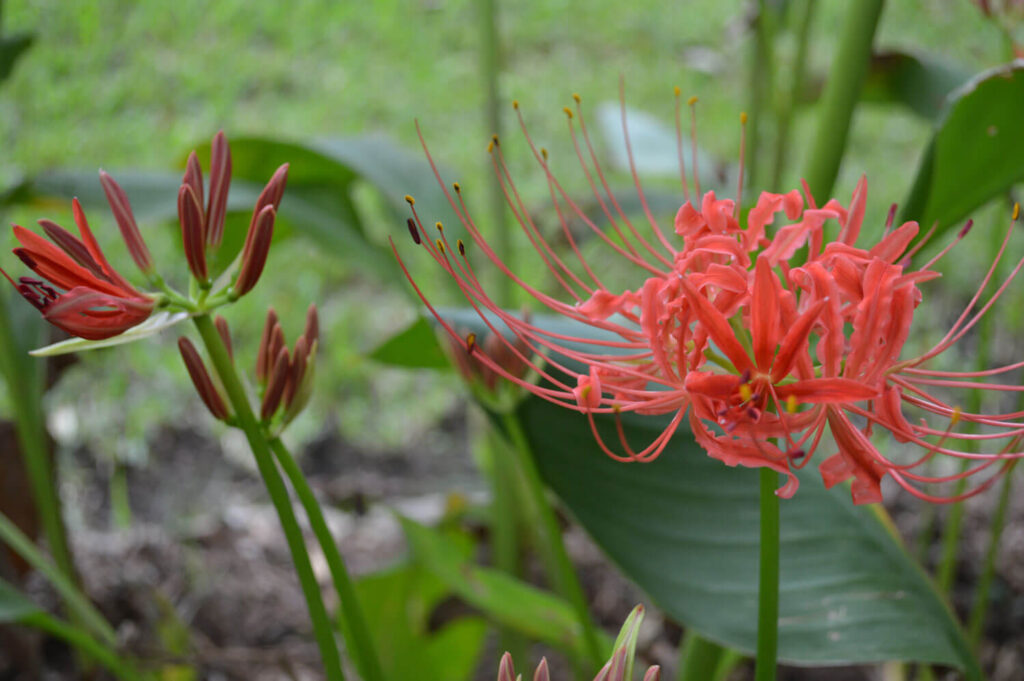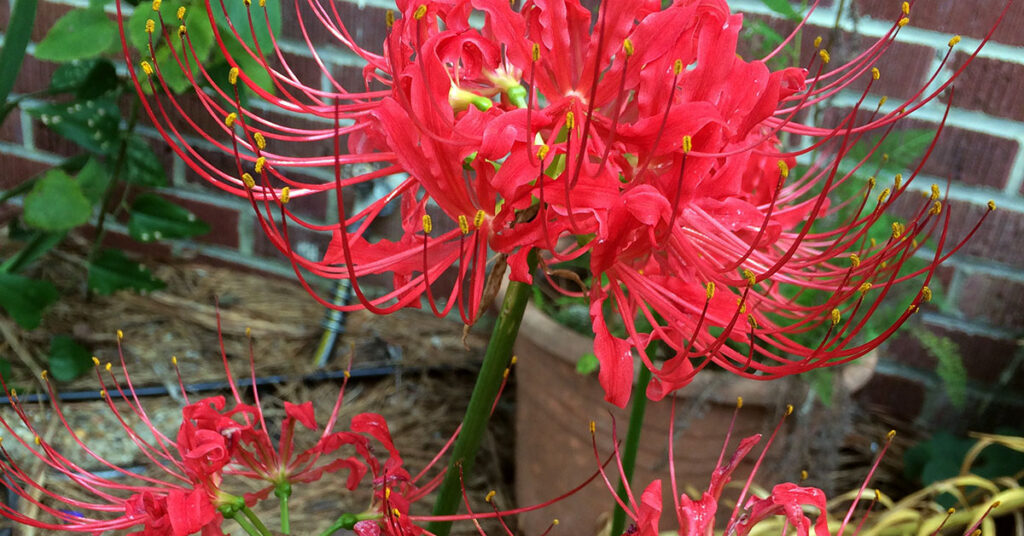In the South, fall brings a bright red carpet of strange spider-looking blooms. These are red spider lilies, also known as hurricane lilies (Lycoris radiata). Their bright red color adds vibrancy to the waning fall landscape.

These flower bulbs are not native to the United States; they were introduced from China in the mid-1800s and have been found here ever since. They are prolific in the South.
Red spider lilies are perennial bulbs that may not bloom yearly. Sometimes, only the leaves make an appearance. Blooming seems almost haphazard, though the weather likely strongly influences it. The LSU Ag Center indicates that regular watering helps with uniform flowering.
These hurricane lily bulbs can be planted at almost any time of the year. The leaves may come up first in spring, then disappear. The flowers appear in the late summer and early fall (September) and last for a few days.
Red Spider Lilies (Lycoris radiata) Grow Guide

In my opinion, these flowers give you the best results when planted in bunches for a burst of dramatic color. So, bunch them together when you plant them to get a bright splash of color. Dig a hole two to three inches deep and drop in a bulb. Cover it with soil and water.
They are bulbs, so well-drained soil is imperative, or they will rot. They will grow in full sun to part-shade. If you’re in a very hot climate, a little shade can help. Spider lilies can be grown in USDA zones 7 to 10.
The bulbs will reproduce, so you must thin them out every few years. Transplanting may disrupt the flowers that year. I keep moving mine to find the right spot, so I’m not getting many flowers, nor are they reproducing. Maybe someday 🙂
Red Spider Lilies in Your Garden
The flowers appear to be deer resistant. I’m surprised that anything is surviving in my yard this year after a family of deer has made this their nighttime haunt. However, the red spider lilies remain unscathed (or should I say untasted).
These flowers will last a long time as cut flowers – always a plus, especially in fall when there are so few blooming plants.

As with any bulb, allow the leaves to die off naturally rather than cutting them down. The leaves produce the food that provides for flowers, so if you cut them off early, the bulb may not have the energy to make a bloom.
I have interspersed these bulbs (as well as daffodils) in with my liriope to add some color to these shady/part sun areas.
